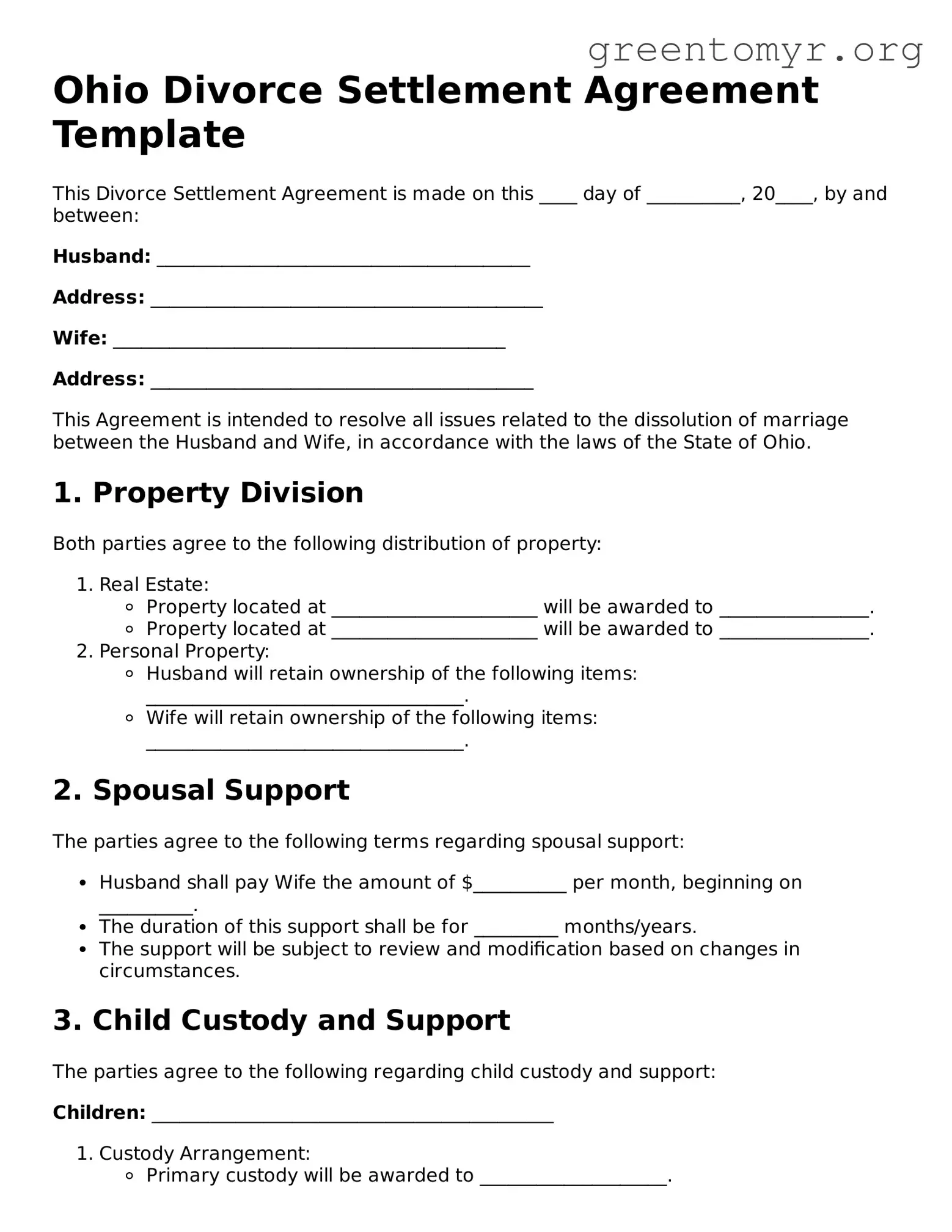Ohio Divorce Settlement Agreement Template
This Divorce Settlement Agreement is made on this ____ day of __________, 20____, by and between:
Husband: ________________________________________
Address: __________________________________________
Wife: __________________________________________
Address: _________________________________________
This Agreement is intended to resolve all issues related to the dissolution of marriage between the Husband and Wife, in accordance with the laws of the State of Ohio.
1. Property Division
Both parties agree to the following distribution of property:
- Real Estate:
- Property located at ______________________ will be awarded to ________________.
- Property located at ______________________ will be awarded to ________________.
- Personal Property:
- Husband will retain ownership of the following items: __________________________________.
- Wife will retain ownership of the following items: __________________________________.
2. Spousal Support
The parties agree to the following terms regarding spousal support:
- Husband shall pay Wife the amount of $__________ per month, beginning on __________.
- The duration of this support shall be for _________ months/years.
- The support will be subject to review and modification based on changes in circumstances.
3. Child Custody and Support
The parties agree to the following regarding child custody and support:
Children: ___________________________________________
- Custody Arrangement:
- Primary custody will be awarded to ____________________.
- Visitation rights for the other parent will be as follows: ____________________.
- Child Support:
- Husband/Wife shall pay child support in the amount of $__________ per month.
- Child support payments will begin on __________.
4. Debts
The parties agree to assume responsibility for the following debts:
- Husband will be responsible for: _______________________________.
- Wife will be responsible for: _________________________________.
5. Miscellaneous Provisions
This Agreement constitutes the entire agreement between the parties. Any amendments must be made in writing and signed by both parties.
By signing below, both parties acknowledge that they understand and agree to the terms outlined in this Ohio Divorce Settlement Agreement.
Husband's Signature: _________________________ Date: ___________
Wife's Signature: ___________________________ Date: ___________
